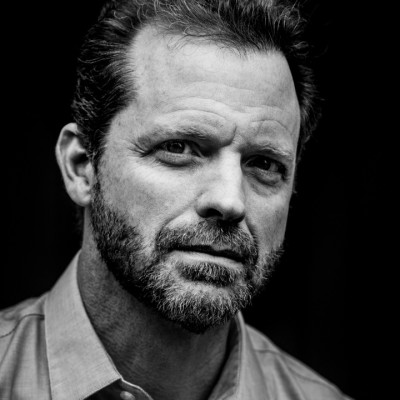Reconnecting with a possible future, as the teacher helped her student do in the previous post, does not prevent progress from ever getting bogged down. When forward movement stalls, revisiting how one has been working toward that future can be helpful. A few days after getting the student started on his writing, the teacher I observed met with him again.
Teacher: Tell me about your writing so far.
Student: I’m frustrated. I’ve got many isolated facts about Robert Graetz, but putting them into paragraphs—it’s just not happening. Everything I write sounds choppy.
Teacher: Okay, explain how you’ve been working on this.
Student: Like I said, I’ve got a bunch of facts. I know I want to tell my reader that Graetz was a brave man, but I can only say that so many times before it sounds redundant.
[NOTE: redundancy was a recent revision skill focus.]
Teacher: Tell me about the facts you have.
Student: Well, here’s one. Because he supported the Montgomery Bus Boycott, his house was bombed three times.
Teacher: Okay, that’s a good fact. Tell me about the bombings.
Student: That’s all I have. Three times people who didn’t agree with him tried to bomb his house.
Teacher: So, you’ve got facts but not much context or detail for each one, right?
Student: Yeah, I guess.
Teacher: Okay, that doesn’t seem to be working. Let’s figure out how we can change your approach so that your writing communicates what you want it to. Let’s begin with the facts. How could we find out more about the context of each one? If you were trying to tell me a story about Graetz’s house being bombed, what would you, as the storyteller, need to know?Student: I guess I’d need to have something like a beginning, middle, and end. Sort of like I was writing a small story.
Teacher: That sounds good! So, if the fact that his house was bombed three times and he still worked for civil rights—if that shows your reader that he was courageous, we should tell those “small stories.” How can we find the information we need?
Student: We could go back and see what our sources tell us about each of those bombings and try to come up with a beginning, middle, and end for each one.
Teacher: That sounds like a great plan…
While a glimpse of the future sparked initial effort, at this point the student needs to reflect on the past so he can identify a way forward. Recognizing this, the teacher guides the student to think about how he has been working so he can consider a better way to proceed. Again, with the teacher’s direction, the student finds resilience, emerges from self-defeating thoughts, and resumes working toward his goal.
Does this approach work with adults? I recently spent several days working with an instructional leader of a school in the Northeast. As we visited classrooms, teachers expressed concern about the amount of material they were expected to address during each school year. They felt like they had to move so quickly from topic to topic that the students lacked the time needed to master much of the content. At a general meeting later in the week, the topic came up. I asked the teachers, “This frustration is obviously not new. How have you addressed it in the past?” Their response indicated that they had shared the frustrations with each other, mentioned the challenge to their administrators, but not done much beyond talking about it.
I replied, “So that doesn’t seem to be working because the problem persists.” I then asked them to make a list of the curricular items they knew were essential for the grade level after theirs. For example, I asked the third grade teachers to make a list of what needed to be mastered in order for students to be ready for fourth grade. The teachers’ lists were very short because they really did not know what the expectations were for the grade level beyond their own. I then asked, “How could you find out?” They said talking to one another across grade levels might help. I replied that the plan seemed reasonable and likely beneficial. We established times for the teachers to cluster in cross-grade groups to have these conversations.
When I returned a few weeks later, I asked the same question, “What are the curricular items that your students need to master in order to be ready for their next grade level?” This time, the teachers pulled out their lists. As we continued to work with this question, we identified the development that was needed throughout the grades, and then identified the specific needs for each grade level. The result? Tears. Of JOY! The teachers felt relieved, like they finally had the freedom to teach and the time to have the students learn what was critical at their grade levels. They realized that not everything in the textbook was essential for equipping students for future success, and that created space for actual learning to occur. The original approach was not working. The teachers knew how well-equipped they wanted their students to be, but trying to cover every possible topic each year was not helping them achieve that vision. Revisiting how they had been approaching the challenge led to insights about how to better proceed.
Many familiar stories include such a pause, a place where a character reflects on what is not working. For example, the prodigal son “had this moment of self-reflection: ‘What am I doing here? Back home, my father’s hired servants have plenty of food. Why am I here starving to death?’” (Luke 15:17, The Voice). In other words, he thought: What I’ve been doing is not working. How can I change the strategy to improve my outcome? We know how this beautiful story ends—a return, a restoration, and a celebration. Examining his choices and their results led to the strategy that brought the young man a better outcome: it brought him home.
Looking back could help us find a way forward. Helping others, including students, look back can aid them in reaching their goals. “This strategy you’re using doesn’t seem to be working. Let’s figure out why and how we can change the strategy so that you are successful.” Look back; move forward.
Obviously a new strategy requires action. In the final post of this series, we’ll explore how we can help students—and each other—move ahead without becoming overwhelmed.




